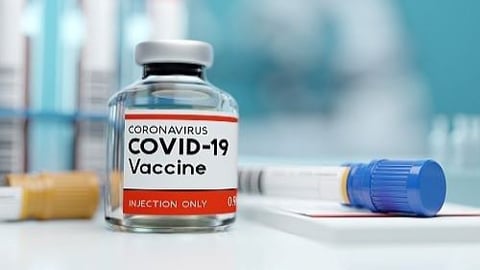Rite Aid Experiences Net Losses in Q2
Rite Aid Corp. has reported a net loss of $331.3 million in its fiscal second quarter, ended Aug. 27. Compared to last year’s $100.3 million, the increase in net loss is due primarily to a current quarter charge of $252.2 million for the impairment of goodwill related to the pharmacy services segment. Net loss was also impacted by higher facility exit and impairment charges driven by the company’s previously announced store closures.
Revenues for the quarter were $5.90 billion compared to revenues of $6.11 billion in the prior year’s quarter, largely due to the expected decline in demand for COVID vaccines and PCR tests.
[Read more: "Rite Aid Makes Significant Strides in ESG Efforts"]
However, the company is on track to exceed target of $170 million of SG&A savings for FY23.
Same-store sales for the second quarter also increased 5.6% over the prior year period, consisting of an 8.0% increase in pharmacy sales, partially offset by a 0.3% decrease in front-end sales. Front-end same-store sales, excluding cigarettes and tobacco products, increased 0.2%.
“Front-end same-store sales were driven by increases in health and consumable products, offset by decreases in alcohol and general merchandise,” pointed out EVP and CFO Matt Schroeder. “Front-end sales were less than our expectations due to a cautious consumer and supply chain challenges. Front-end gross profit was impacted by a $5 million increase in shrink as we recorded the annual impact of physical inventories on a disproportionate number of our urban stores. Front-end margin benefited from a reduction in markdowns resulting from the change to our loyalty program.”
Revenues decreased 1.1% in the retail pharmacy segment over the prior year quarter, driven by a reduction in COVID vaccine and testing revenue as well as store closures, partially offset by an increase in both acute and maintenance prescriptions. The number of prescriptions filled in same stores increased 3.1%. Total same-store prescriptions, excluding COVID immunizations, increased 2.1%, with same-store maintenance prescriptions increasing 1.2% and other same-store acute prescriptions increasing 5.3%. Prescription sales accounted for 70.7% of total drugstore sales.
The retail pharmacy's adjusted EBITDA was $31.5 million or 0.7% of revenues compared to last year's second quarter adjusted EBITDA of $69.4 million or 1.6% of revenues.
“We've made good progress on key initiatives during the quarter including driving prescription growth, improving operating margins at Elixir, and achieving significant reductions in SG&A expenses across our business,” commented Heyward Donigan, president and CEO. “Our front-end performance however trailed expectations due to cautious consumer spending in this environment and continued supply chain challenges.”
Rite Aid is maintaining its outlook for fiscal 2023 revenues but lowering its outlook for net loss and adjusted EBITDA. Total revenues are expected to be between $23.6 billion and $24.0 billion in fiscal 2023.
The company is increasing its net loss between $520.3 million and $477.3 million due to goodwill impairment charges in the pharmacy services and increased impairment charges for closed stores.
Adjusted EBITDA is expected to be between $450 million and $490 million versus prior guidance of between $460 million and $500 million, due to expectations of cautious consumer demand and continued supply chain challenges in front-end retail business, partially offset by improved margins at Elixir.
Capital expenditures are expected to be approximately $225 million, with a focus on investments in digital capabilities, technology, prescription file purchases and distribution center automation.
“As we look to the second half of the year, we expect continued pressure on consumer spending and supply chain challenges,” said Donigan. “At the same time, we are ready to meet a high demand for immunizations, while driving continued strong performance at Elixir and further SG&A expense reductions.”
Total store count at the end of the second quarter was 2,352.
Philadelphia-based Rite Aid is No. 21 on The PG 100, Progressive Grocer’s 2022 list of the top food and consumables retailers in North America.






